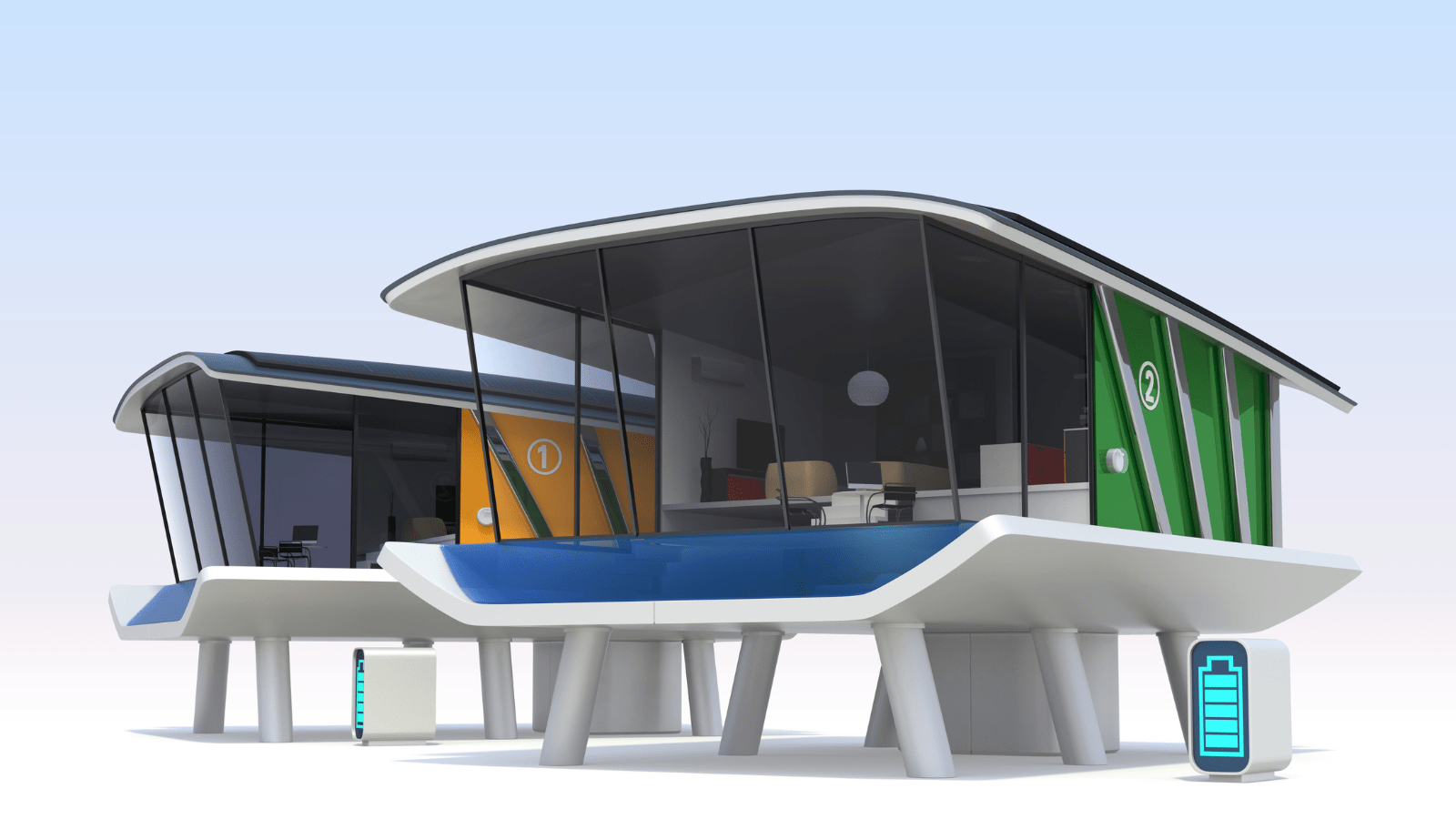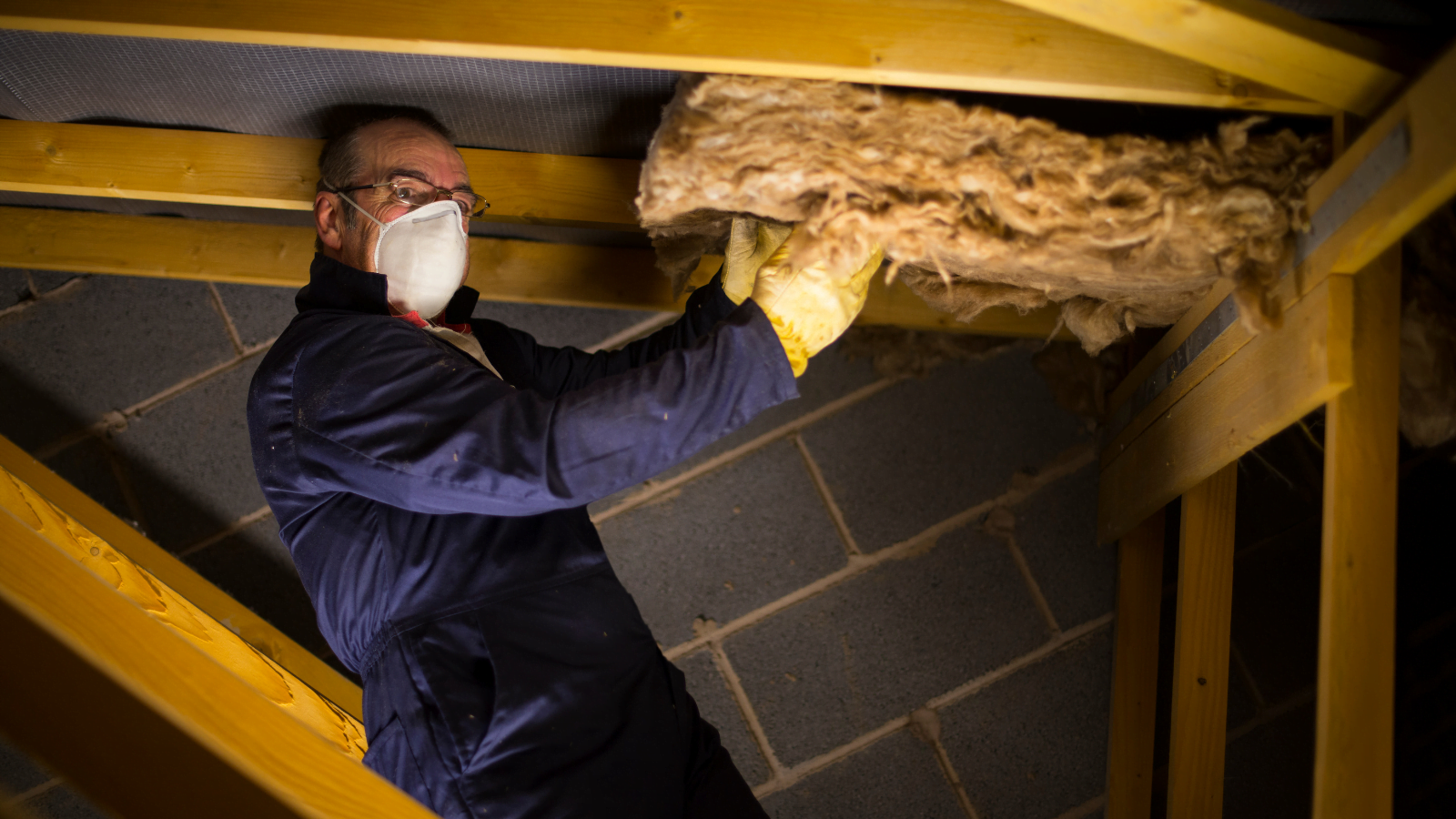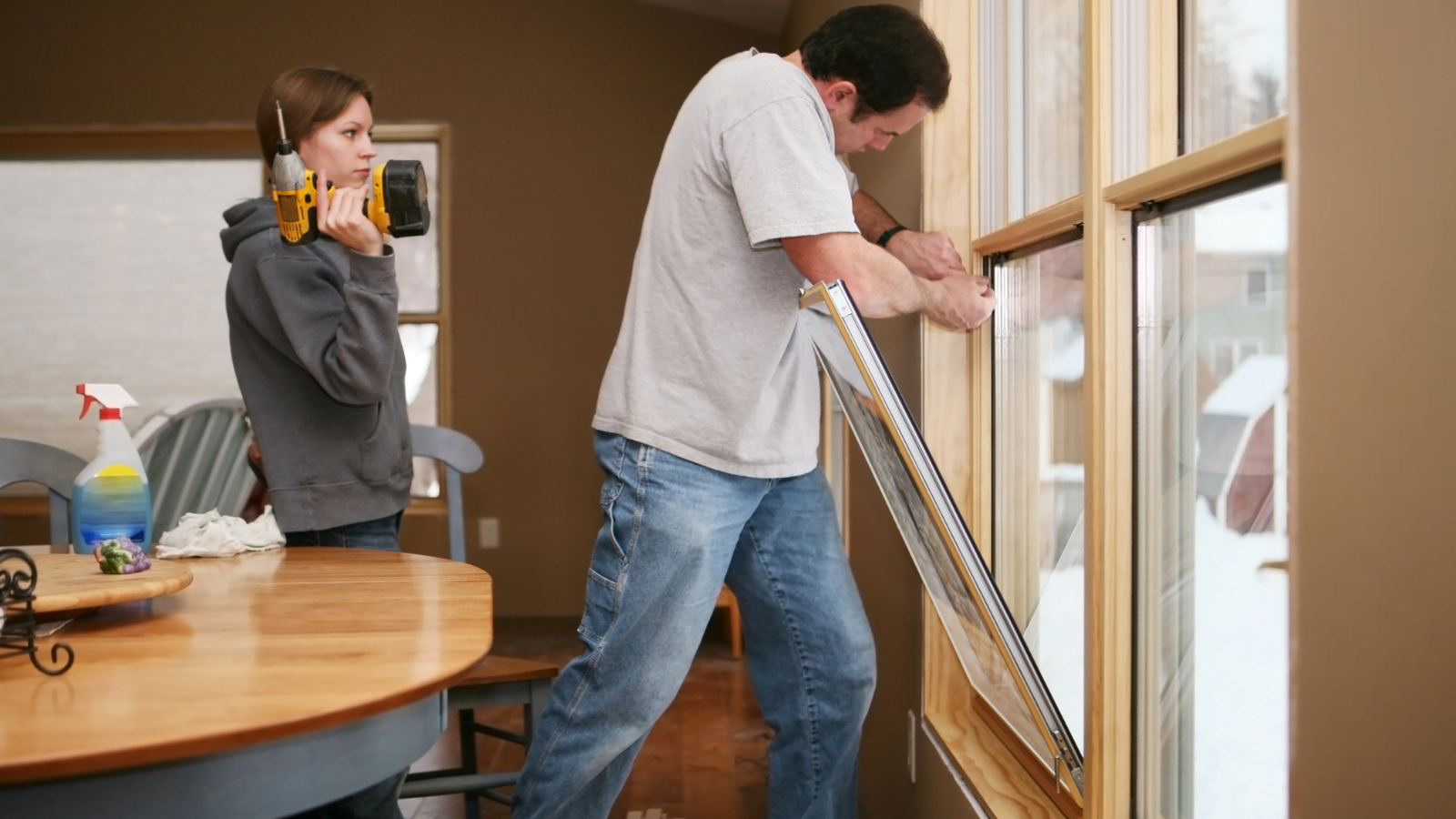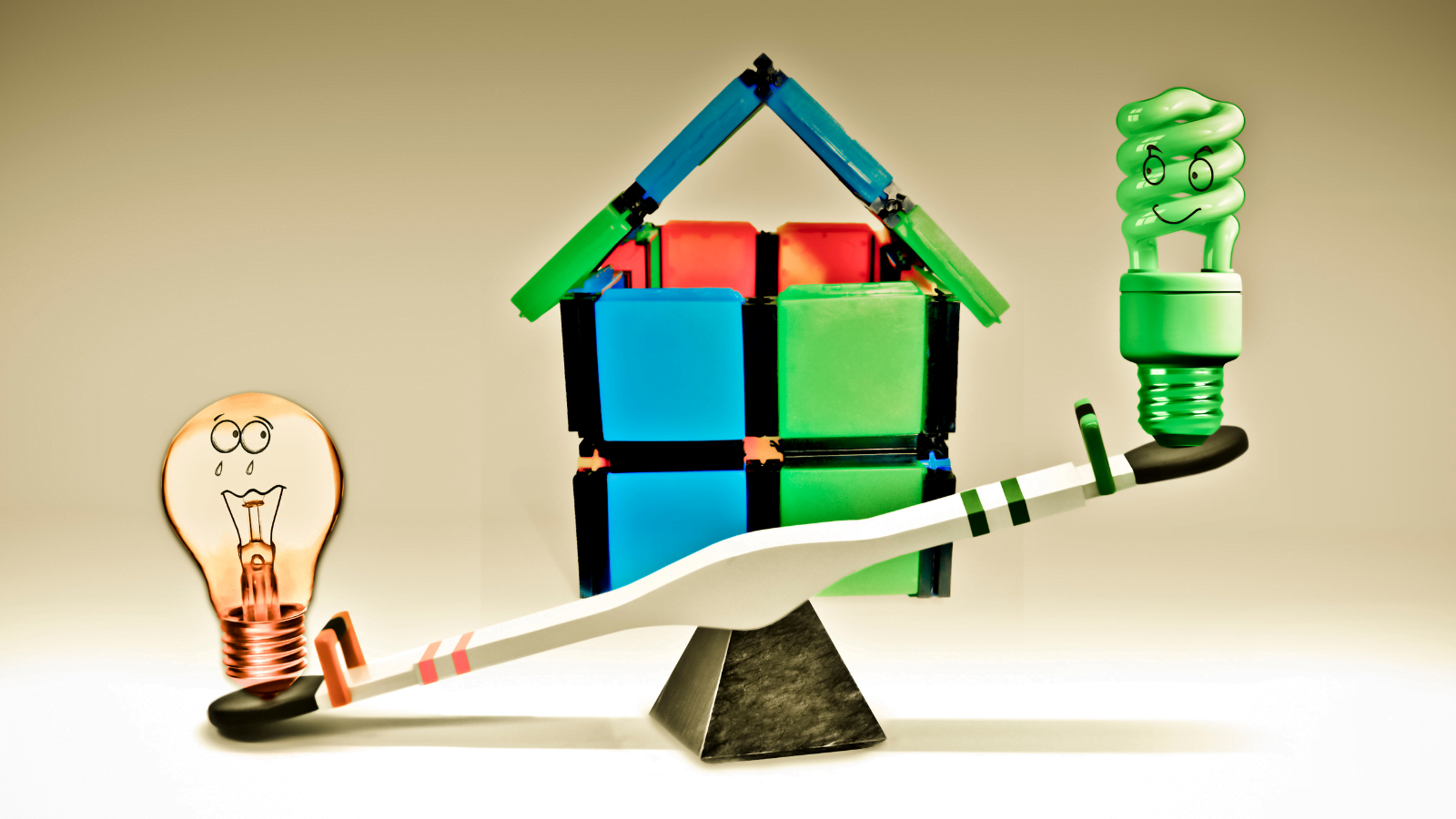Homeowners everywhere are becoming more conscious of their carbon footprint and energy bills, leading to the rise in the popularity of green home improvements. From changing light bulbs to upgrading windows, there’s no shortage of ways to save money while reducing your environmental impact.
ENERGY STAR suggests that one key way to improve a home’s energy efficiency is by sealing air leaks and adding insulation – which could help reduce those pesky energy costs by 20%. So make sure your wallet isn’t too leaky this month…and tackle some eco-friendly projects for long-term savings!
Investing in energy-efficient upgrades for your home can be a really smart move! Not only do programmable thermostats, energy-efficient lighting, appliances, and windows/doors help you keep more $$ in your wallet – the federal government is supportive, too, with tax credits and other incentives.
By making the right upgrades, homeowners can enhance their home’s comfort and energy efficiency while also contributing to environmental protection.
Assessing Your Home’s Energy Performance
Ready to save money on your energy bills and make your home more efficient? Start by assessing its performance! An energy audit or a Home Energy Score will give you valuable insights into the areas of your residence where improvements can be made. With just some knowledge from these assessments, you’ll soon enjoy reduced electricity costs and eco-friendly peace of mind.
Energy Audit
Need an energy makeover? A professional auditor can give your home the VIP treatment! They’ll inspect everything from insulation and air sealing to lighting, appliances, HVAC systems, and more – so you can keep all those hard-earned dollars in your wallet.
The auditor may use specialized tools such as blower doors, infrared cameras, natural gas leak and carbon monoxide detectors, moisture meters, and non-toxic smoke pens to identify areas where energy is wasted.
After the home energy audit, you will receive a detailed report from the auditor. This report will identify energy-saving opportunities and suggest improvements that will help you reduce your energy bills. In addition, the report may contain cost estimates for implementing each improvement and information about potential energy savings.

Home Energy Score
A home energy score measures how much energy your home consumes and rates its efficiency on a scale of 1 to 10. The score is determined by analyzing your home’s walls, roof, foundation, windows, and doors and heating, cooling, and hot water systems. A higher score means your home is more energy-efficient. The score is easy to understand and provides a simplified assessment of your home’s energy performance.
A score of 5 indicates that the home is about as energy-efficient as a typical home, while a score of 10 indicates that the home is highly energy-efficient and uses very little energy.
Understanding your home’s energy performance can be a game-changer when it comes to saving money on energy bills. An energy audit or score report is invaluable in identifying which areas require more efficient energy use so that you know exactly where to make improvements and start putting some cash back into your pocket!
Insulation and Air Sealing
Energy efficient home improvements don’t have to be hard! A great way for homeowners to get started is with insulation and air sealing. By properly insulating and air sealing your attic, walls, crawl space – you name it – you can save on energy costs while enjoying better air quality & greater comfort at the same time. What are YOU waiting for? Start on saving energy today!
Attic Insulation

The attic is one of the most important areas of the home to insulate. The EPA says that adding attic insulation can save homeowners up to 15% on heating and cooling costs.
Attic insulation’s recommended R-value differs by location and usually falls between R-38 to R-60. Fiberglass, cellulose, and spray foam are some of the insulation materials available to homeowners.
Wall Insulation
Adding insulation to walls can cut energy costs and enhance home comfort. The suitable R-value for exterior wall insulation differs depending on the location, usually between R-13 and R-21.
Various types of insulation materials, like fiberglass batts, blown-in cellulose, and spray foam, are available for homeowners to choose from. However, it is important to remember that installing wall insulation could be tough and pricey, particularly for walls that are already finished.
Crawl Space Insulation
A crawl space is a small area underneath a building’s ground floor that is unfinished and not meant for occupation. It is narrow and has limited headroom, typically requiring crawling instead of standing. If the space under the ground floor is taller than 1 to 1.5 metres (3 ft 3 in. to 4 ft 11 in.), it may be considered a basement instead.
Insulating your crawl space can cut down on your energy expenses and boost air quality indoors. The ideal R-value for crawl space insulation depends on where you reside but typically falls between R-13 to R-25 for crawl space floors.
Homeowners have several insulation options, such as fiberglass batts, blown-in cellulose, and spray foam. However, it’s essential to remember that crawl space insulation can be challenging and take a long time, especially if the crawl space is tiny or hard to reach.
Air Sealing
Air sealing closes gaps and cracks within the house to prevent air from leaking. According to the U.S. Department of Energy, air sealing can save homeowners up to 20% on heating and cooling costs.
To ensure a house is properly sealed, homeowners should focus on areas like windows, doors, and ductwork. Materials like caulk, weatherstripping, and foam sealant can be used.
Windows and Doors
Energy-Efficient Windows

Installing energy-efficient windows is an effective way to lower energy costs and enhance home comfort. Energy Star-certified windows are specifically engineered to retain heat during cold weather and repel it during hot weather.
They come in various styles and materials, including wood, vinyl, fiberglass, and aluminum. Double-pane windows are more energy-efficient than single-pane windows, and triple-pane windows are even better.
Low-E coatings and gas fills between the panes can further improve energy efficiency. According to the U.S. Department of Energy, replacing single-pane windows with Energy Star-certified windows can save homeowners $126 to $465 a year in energy costs, depending on the climate zone.
Energy-Efficient Doors
Doors are another important component of a home’s energy efficiency. Energy-efficient doors have a tight seal that prevents drafts and air leaks. They are typically made of fiberglass, steel, or wood with a foam core.
When choosing an energy-efficient door, look for the Energy Star label, which indicates that the door meets strict energy efficiency guidelines set by the U.S. Environmental Protection Agency. Energy Star-certified doors have a variety of features that improve energy efficiency, including:
- Multiple layers of weatherstripping to prevent air leaks
- A polyurethane foam core for insulation
- A low-E coating to reduce heat transfer
- Double or triple-pane glass for improved energy efficiency
According to the U.S. Department of Energy, replacing an old, drafty door with an energy-efficient door can save homeowners up to 10% on their energy bills.
Heating and Cooling
Heating and cooling account for a significant portion of a home’s energy usage, making it an important area to focus on when making energy-efficient home improvements. There are several options available for homeowners to improve the efficiency of their heating and cooling systems.
High-Efficiency Furnaces and Boilers
Replacing an old furnace or boiler with a high-efficiency model can significantly reduce energy usage and costs. High-efficiency furnaces and boilers have an Annual Fuel Utilization Efficiency (AFUE) rating of 90% or higher, compared to older models with ratings as low as 56%.
This means they convert more of the fuel they use into heat, resulting in less energy waste and lower energy bills. When choosing a high-efficiency furnace or boiler, it’s important to consider factors such as the size of the home, the climate, and the type of fuel being used.
For assistance in choosing the most suitable heating option for your home, consulting with a qualified heating contractor is recommended.
Heat Pumps
Heat pumps are another option for energy-efficient heating and cooling. They work by transferring heat from the air or ground outside the home to the inside rather than generating heat like a furnace or boiler. This makes them more efficient, as they use less energy to provide the same amount of heating or cooling.
There are two types of heat pumps: air-source and ground-source (also known as geothermal). Air-source heat pumps are more common and less expensive to install, while ground-source heat pumps are more efficient but require a larger upfront investment.
Ductless Mini-Split Systems
Ductless mini-split systems are heat pumps that do not require ductwork to distribute air throughout the home. Instead, they use individual units mounted on walls or ceilings to provide heating and cooling to specific rooms or areas. This allows for more precise temperature control and can result in energy savings by not heating or cooling unused areas of the home.
Geothermal Heat Pumps
Geothermal heat pumps use the earth’s constant temperature to provide heating and cooling. They work by circulating water through pipes buried in the ground, where it absorbs heat in the winter and releases heat in the summer. While they are more expensive to install than other types of heat pumps, they are also the most efficient and can result in significant energy savings over time.
Overall, there are several options available for homeowners to improve the efficiency of their heating and cooling systems. Choosing the right option depends on factors such as the size of the home, the climate, and the type of fuel being used. A heating contractor can help you determine the best heating system for your home.
Lighting and Appliances
Upgrading lighting and appliances is a simple and effective way to increase a home’s energy efficiency. This will save you money and energy while also improving the comfort and convenience of your home.
LED Lighting
Want to save on energy costs? Make the switch from traditional incandescent bulbs to LED lighting. Not only do LEDs use a fraction of the power, but they last up to 25 times longer – meaning fewer trips up ladders for tedious bulb replacements.
And with less heat generated, you’ll enjoy safer and more comfortable home-lighting experiences without breaking the bank! When selecting LED bulbs, it is important to pay attention to the brightness and color temperature.
Brightness is measured in lumens, and the higher the lumens, the brighter the bulb. Color temperature is measured in Kelvin and refers to the warmth or coolness of the light. Lower Kelvin temperatures produce a warmer, more yellow light, while higher Kelvin temperatures produce a cooler, bluer light.
Energy-Efficient Appliances
Upgrading to energy-efficient appliances can also make a significant impact on a home’s energy usage. ENERGY STAR-certified appliances use up to 50% less energy than standard models, which can translate to significant cost savings on electricity bills.
When shopping for appliances, it is important to look for the ENERGY STAR label and compare the energy usage of different models. Additionally, consider the size of the appliance and whether it is appropriate for the household’s needs. A larger appliance may use more energy than necessary if it is not fully utilized.
Table 1 below provides examples of common household appliances and their average annual energy usage.
| Appliance | Average Annual Energy Usage (kWh) |
|---|---|
| Refrigerator | 400-1,200 |
| Dishwasher | 300-700 |
| Washing Machine | 400-1,200 |
| Dryer | 500-1,500 |
| Television | 100-300 |
Renewable Energy
Homeowners are adopting renewable energy sources more and more to reduce their carbon footprint and save on energy bills. These sources are sustainable and eco-friendly, which is why they’re a popular choice.
Solar Panels
Solar panels are one of the most popular forms of renewable energy for homeowners. They work by utilizing energy from the sun and converting it to electricity, which can be used to power up your home.
Solar panels can be installed on your roof or in your yard, and they are relatively easy to maintain. They are also becoming more affordable, making them a viable option for many homeowners.
When considering solar panels, it’s important to keep in mind that they may not be suitable for every home. The amount of sunlight your home receives, the size of your roof, and the angle of your roof can all affect the efficiency of your solar panels.
It’s important to consult with a professional to determine if solar panels are right for your home.
Wind Turbines
Homeowners can consider wind turbines as another option for renewable energy. Wind turbines convert wind energy into electricity that can be used to power your home.
Wind turbines are typically installed in your yard, and they require significant space to run efficiently. Not every home may be suitable for wind turbines; Please note this!
To determine if wind turbines are suitable for your home, consider the amount of wind in your area, the size of your yard, and the local zoning laws. Consulting with a professional can help you make an informed decision.
Make the switch to a renewable energy source and put yourself on track for long-term savings. Solar panels and wind turbines are now more accessible than ever – offering homeowners an environmentally conscious way to power their homes without breaking the bank.
Before investing in one of these solutions, thoroughly consider if it’s right for your specific home setup!
Frequently Asked Questions (FAQs)
Here are some frequently asked questions about energy-efficient home improvements:
Q: What are energy-efficient home improvements?
A: Energy-efficient home improvements refer to upgrades made to a home that reduces energy consumption and result in lower utility bills. These improvements can include upgrading insulation, windows, doors, HVAC systems, and lighting to more energy-efficient options.
Q: What are the benefits of making energy-efficient home improvements?
A: The benefits of making energy-efficient home improvements are numerous. Not only do they reduce energy consumption and lower utility bills, but they also increase the comfort of the home by reducing drafts and improving temperature control. Additionally, energy-efficient upgrades can increase the value of a home and make it more appealing to potential buyers.
Q: Are there tax credits available for energy-efficient home improvements?
A: Yes, there are tax credits available for certain energy-efficient home improvements. The IRS provides details on these tax credits and eligible expenditures on their website. It is important to consult with a tax professional to determine if you are eligible for these credits and how to claim them.
Q: How much do energy-efficient home improvements typically cost?
A: The cost of energy-efficient home improvements can vary widely depending on the type and scope of the upgrades. Some upgrades, such as upgrading lighting or adding weather stripping, can be relatively inexpensive, while others, such as upgrading HVAC systems or installing solar panels, can be more costly. It is important to consider the long-term savings on utility bills when evaluating the cost of these upgrades.
Q: Can homeowners make energy-efficient home improvements themselves?
A: Homeowners can perform energy-efficient home improvements like weather stripping and lighting upgrades on their own, but hiring a professional to handle complex upgrades like HVAC system upgrades and solar panel installation is recommended. Seeking a professional’s assistance can guarantee that the upgrades are executed accurately and safely.
Conclusion
Homeowners are taking the lead in revolutionizing energy efficiency with cutting-edge home improvements. By simply sealing air leaks or insulating ductwork, carbon emissions can be reduced while also saving on utility bills. These improvements have become popular in recent years.
Invest in eco-friendly upgrades today to make a long-lasting impact on the planet and yourself. By making energy-efficient upgrades to your home, you may be eligible for tax credits from the government as a homeowner.
By taking advantage of the Energy Efficient Home Improvement Credit, homeowners can claim up to $1,200 for energy property costs and specific energy-efficient home improvements.
In addition, homeowners may be eligible to receive up to $2,000 per year for qualified heat pumps, biomass stoves, or biomass boilers. To make the most informed decision about energy-efficient home upgrades, homeowners should research and compare the various options available.

